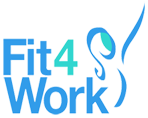Whether due to our workforce’s desire to strike a better work-life balance, or the increased productivity of those employees given the opportunity, remote working is on the rise.
Enabling organisations to slash costs, whilst helping employees feel valued, trusted and happier in their work, the benefits are clear for employees and businesses alike.
However, with remote workers absent from the office environment during DSE Assessments (Display Screen Equipment), there is a risk involved.
Originally introduced by the government in 1992, DSE legislation protects employees from the physical side-effects commonly attributed to operating a computer workstation, and is a legal requirement of all office-based employees and those who work from home on a constant basis.
Access to adequate technology for remote workers is rarely a problem in today’s technological world. Its positioning, the desks on which they’re positioned, and the chairs in which workers sit, however, should comply with DSE regulations in order to defend against discomfort and injury.
Committed to helping employees maintain good physical health in the workplace, Fit4Work recommend that DSE Assessments are extended to all remote workers, limiting their risk of suffering the common issues attributed to poor workstation set-up.
What are the risks?
Experienced Physiotherapists, the most common problems our Fit4Work trainers hear about due to unsuitable workstation conditions are eye strain/fatigue and repetitive strain injuries.
Back ache, upper limb pains, aches and pains and inflammations are also common aliments associated with workstation misuse or improper conditions.
While some businesses extend DSE Assessments to their remote workers too, others don’t, putting an increasing number of employees at risk.
Many employees enjoy the flexibility of working between both the office and their homes, while others are given the opportunity to work remotely in rare and specific circumstances.
For all these possible scenarios in which DSE Assessments aren’t possible or likely to be provided, we can be of help.

Fit4Work’s remote working workstation checklist
Your thighs should be parallel to the floor.
Achieve this by adjusting the height and/or the angle of your chair. If you cannot adjust your chair and you’re suffering from back pain, consider a chair with greater functionality in this area.
Your feet should rest flat on the floor or on a footrest.
Again, achieve this by adjusting the height and/or the angle of your chair.
The back of your knees should be clear of the front edge of your seat.
Adjust the depth of the chair seat so that you can easily place your fist behind your knee. Be sure to specify the appropriate seat depth length when ordering a new chair.
Your back (lower and mid-back) should be well supported.
Adjust the height, tension and angle of the backrest to ensure the lumbar support is positioned at your waist.
Your forearms should be supported, and your shoulders relaxed at all times.
The height and distance between your armrests should allow freedom of movement for your forearms when performing tasks, yet provide support for them during rest periods when using your mouse. Avoid hunching your shoulders to ensure that the elbows/upper arms remain close to your torso.
Your elbows should be approximately the same height as the keyboard.
Adjust the height of your keyboard tray or work surface so the keyboard is at the height of your elbows.
Your wrists should be straight at all times, and your hands in line with your forearms.
Adjust the angle and height of the keyboard tray or work surface to ensure straight wrists. If your keyboard tray or work surface is not adjustable, adjust your seat to ensure straight wrists. You will need to use a footrest if you have raised the seat and your feet are not flat and well supported on the floor.
The monitor should be at a comfortable reading distance and height.
The viewing distance should be within 16” – 29″ (40cms-74cms). About one arm’s length. The monitor height should allow the neck to be in a neutral position when looking at the top row of text on the screen.

We also recommend that mice are positioned next to the keyboard, at an equal height, and a document holder placed between the keyboard and the screen, matching the screen’s height.
Don’t forget, task lights negate the need to strain your eyes, and adjusting the brightness of monitors reduces our tendency to lean forward into the screen, damaging our posture over time.
The HSE (Health and Safety Executive) also recommends remote workers keep the following points in mind to defend against the dangers of DSE-related injuries.
- At least 5 minutes of rest every hour spent on DSE work
- Avoid awkward, static postures by regularly changing position
- Move, stretch, take little walks around your environment
Fit4Work DSE Assessments & Training
For those working from home on a temporary or occasional basis, without the legal requirement for a DSE Assessment, we hope our Remote Working Workstation Checklist can help you set-up a safe, comfortable work environment.
For businesses, Fit4Work DSE Assessments provide the peace of mind that their employees work in a safe environment. For seasoned remote workers, there’s the feeling of being valued, having extended to them the same benefits as office-based staff, helping them to work in comfort, with their health and wellbeing monitored by the business they work for.
These individual assessments take only 30 minutes per person.
We also offer DSE Assessor Training, for employees volunteered by their business, enabling them to carry out DSE Assessments across the business. This means employees working from home for any considerable length of time, whether it’s in their contract or not, can be assessed at no cost the business, by a fellow employee.

